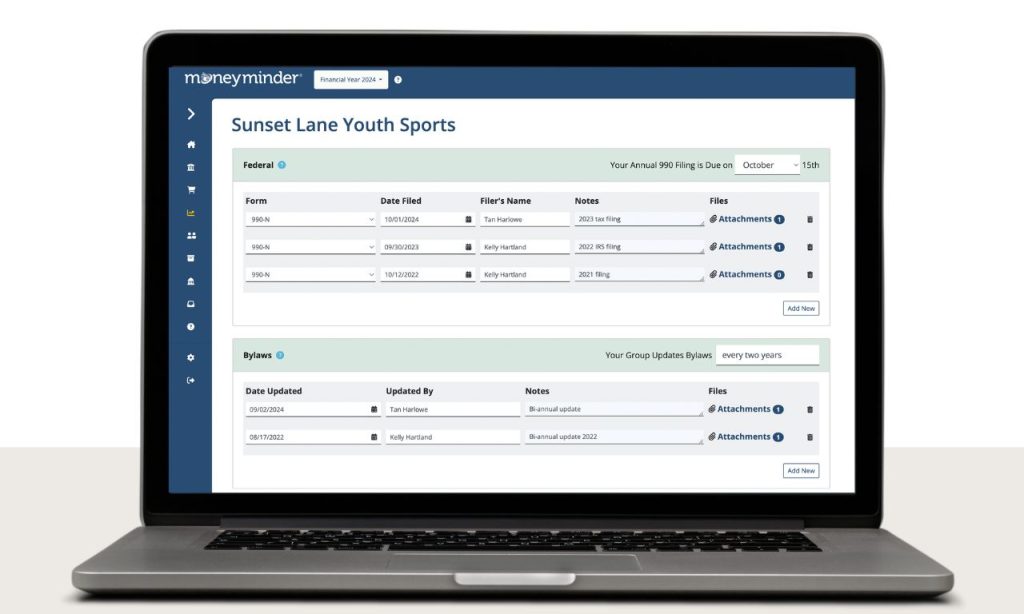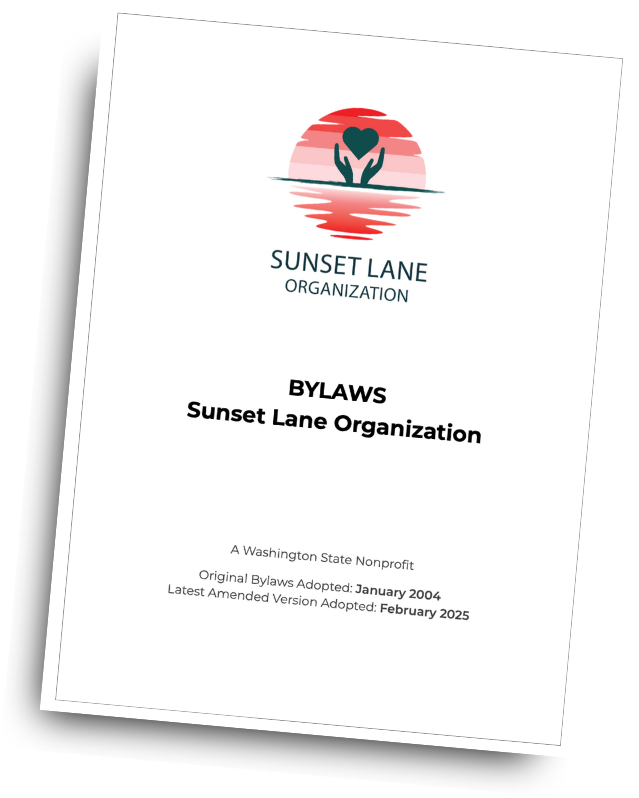Purpose of Bylaws for a Nonprofit Organization
Bylaws are like a GPS for your organization, ensuring your nonprofit stays on course as you run it day in and day out. Bylaws establish the responsibilities of the board of directors and procedures for meetings and decision-making. They also help ensure you are in compliance with state and federal regulations.
Well-crafted bylaws serve as a clear guide to everything your group does – like making decisions, preventing disputes, resolving conflicts, and even dissolving the organization if necessary.
Taking the time to draft strong bylaws can save your organization from confusion, inefficiency, headaches and legal issues. Don’t overlook this key step of building a solid nonprofit foundation.
Understanding Nonprofit Bylaws
Whether you are just creating your bylaws or you are new to the organization, you are going to want to make sure you understand them from beginning to end. Ensuring the bylaws are understood helps your nonprofit operate transparently and in compliance with the law.
How to Create Nonprofit Bylaws
What goes in your nonprofit bylaws? Consider the nonprofit bylaws example below, but be sure to review your state and IRS requirements. Have the board approve the bylaws before submitting them as part of your nonprofit’s official documents.
- Article I – Name and Purpose(s)
- Name of the organization
- A clear statement of objectives and goals
- Article II – Basic Policies
- Article III – Membership and Dues
- Eligibility: Criteria for membership.
- Admission: Process for joining the organization.
- Rights and Responsibilities: Rights (e.g., voting) and responsibilities of members.
- Termination: Conditions under which membership may be terminated.
- Article IV – Officers
- Roles: Titles and duties of officers (e.g., President, Vice President, Secretary, Treasurer).
- Election and Terms: How officers are chosen and their terms of office.
- Vacancies: How officer vacancies are filled.
- Article V – Board of Directors/Managers
- Composition: Number of board members and their roles.
- Powers and Duties: Responsibilities and authority of the board.
- Election and Terms: How board members are elected, their terms, and procedures for filling vacancies.
- Meetings: Frequency and procedures for board meetings.
- Article VI – Committees
- Standing Committees: Permanent committees (e.g., finance, membership).
- Ad Hoc Committees: Temporary committees for specific tasks.
- Appointment: How committee members are appointed and their duties.
- Executive Committees
- Article VII – Meetings
- Annual Meetings: Frequency and scheduling.
- Special Meetings: How and when special meetings can be called.
- Notice: Requirements for notifying members of meetings.
- Quorum: Number of members needed to conduct business.
- Voting: Voting procedures and requirements for passing resolutions.
- Article VIII – Council Membership
- Relationship with governing bodies (i.e. National and State PTA).
- List what advisory, oversight, or governance functions they provide.
- Council Meetings (i.e. State Annual PTA meeting), if applicable.
- Article IX – Finances
- Fiscal Year: The organization’s fiscal year.
- Budget: How the budget is prepared and approved.
- Duties of the Treasurer: Responsibilities related to financial management.
- Audit: Procedures for financial auditing.
- Article X – Parliamentary Authority
- Article XI – Amendments
- How bylaws can be amended (e.g., notice requirements, voting procedures).
- Article XII – Dissolution
- Process for dissolving the organization and distributing assets.
- Article XIII – Miscellaneous
- Conflict of Interest: Policy for handling conflicts of interest.
- Indemnification: Provisions for protecting board members and officers from liability.
- Records: Procedures for maintaining and accessing records.

Starting a nonprofit? This fillable startup guide from our partners at BryteBridge can help you stay on track.
Updating Your Nonprofit’s Bylaws
As your nonprofit grows, your bylaws may need revisions to reflect changes in your group. Most bylaws specify how changes should be proposed, discussed, and approved and how often the document should be revised. Here’s a great podcast episode from MoneyMinder about when to update your nonprofit bylaws.
Nonprofit Bylaws Example
When creating your nonprofit bylaws, it’s often helpful to see a real-world example to understand how different sections come together to create an effective and clear governing document.
Here are some sample bylaws from Sunset Lane Organization, a fictional nonprofit, demonstrating how bylaws can be structured to define leadership roles, decision-making processes, financial oversight, and more. While every nonprofit’s bylaws should be tailored to fit its unique mission and operational needs, this example can provide you with a solid starting point.
Stay on Top of Key Compliance Deadlines like Bylaw Updates

Managing your responsibilities as a nonprofit board member can be overwhelming, and compliance tasks tend to be overlooked. With our new compliance tracker, you can easily track important deadlines and past activities-like when you last updated your bylaws-alongside other essential tasks such as Federal 990 filings, state licensing, and more, all in one convenient place.
- Track key upcoming due dates
- Log who filed what and when, historically
- Attach records and files
- Add custom compliance items
- Keep track of key data points like Formation Date, EIN, and Financial Year
Learn how to use the compliance log in this article from our User Help Center.

Not yet a MoneyMinder user? Try out the compliance log and all of the features free for 30 days when you start your free trial.

 Connect your Venmo account to MoneyMinder PRO to directly download transactions, saving you time and effort. You just review the transactions to ensure they are properly categorized and fill out any required fields.
Connect your Venmo account to MoneyMinder PRO to directly download transactions, saving you time and effort. You just review the transactions to ensure they are properly categorized and fill out any required fields. Connect your Bank, Paypal and Square accounts to MoneyMinder PRO to directly download transactions, saving you time and effort. You just review the transactions to ensure they are properly categorized and fill out any required fields.
Connect your Bank, Paypal and Square accounts to MoneyMinder PRO to directly download transactions, saving you time and effort. You just review the transactions to ensure they are properly categorized and fill out any required fields. Connect your Bank, Paypal and Square accounts to MoneyMinder PRO to directly download transactions, saving you time and effort. You just review the transactions to ensure they are properly categorized and fill out any required fields.
Connect your Bank, Paypal and Square accounts to MoneyMinder PRO to directly download transactions, saving you time and effort. You just review the transactions to ensure they are properly categorized and fill out any required fields. Join It is a membership management service that helps businesses and nonprofits effectively sell, track, and grow their membership.
Join It is a membership management service that helps businesses and nonprofits effectively sell, track, and grow their membership. Connect your Bank, Square and PayPal accounts to MoneyMinder PRO to directly download transactions, saving you time and effort. You just review the transactions to ensure they are properly categorized and fill out any required fields.
Connect your Bank, Square and PayPal accounts to MoneyMinder PRO to directly download transactions, saving you time and effort. You just review the transactions to ensure they are properly categorized and fill out any required fields.